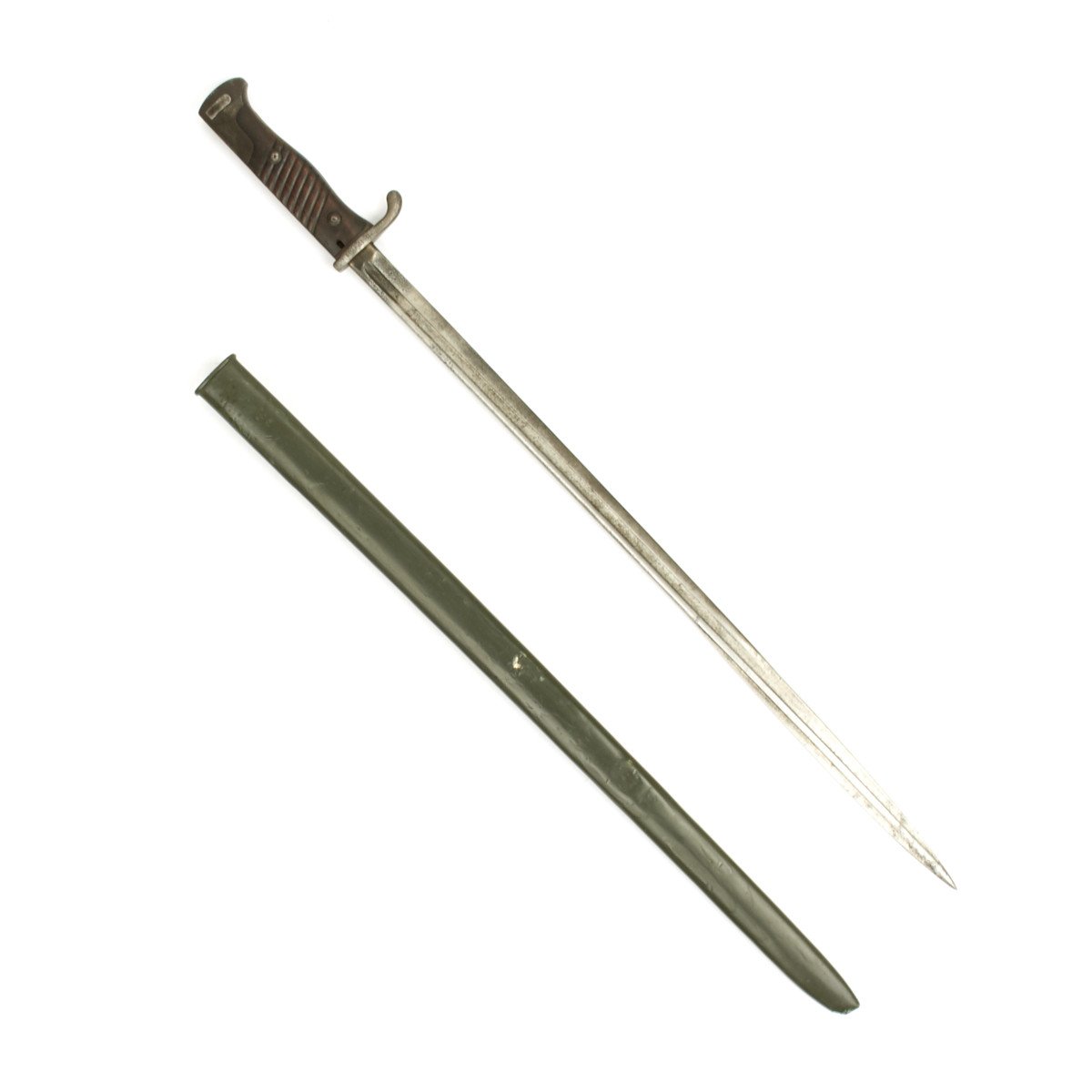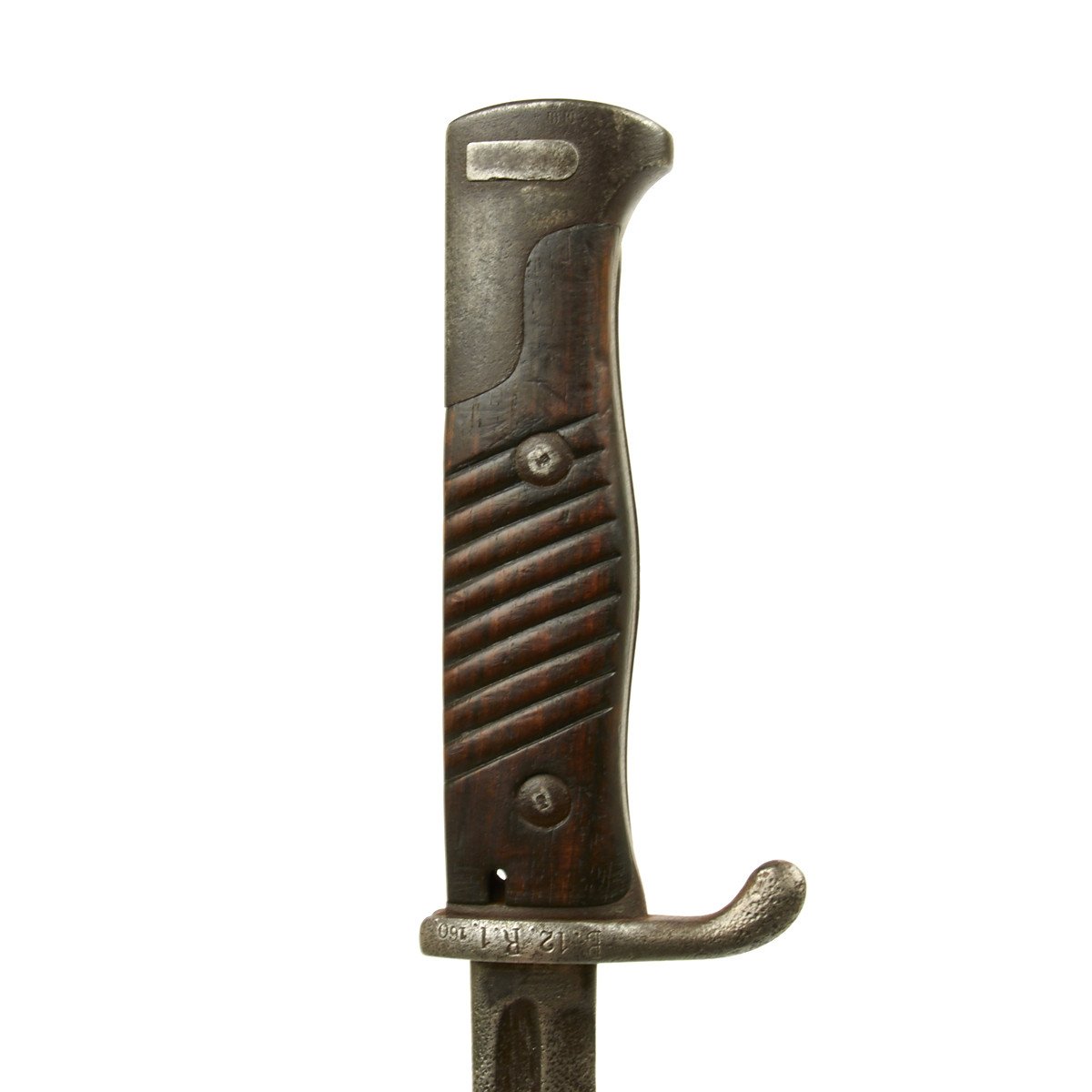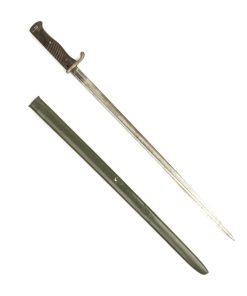Original German M1898 Seitengewehr Long Bayonet with Ersatz Scabbard Original Items
$ 350,00 $ 105,00
Original Item: Only One Available. In 1898 with the new Mauser bolt action infantry rifle the Military adopted this long bayonet which gave an Infantryman the ability to bring a Cavalryman down from his horse due to the bayonets long reach. Of course Cavalry was soon becoming a thing of the past and these long bayonets were being surpassed by different and shorter versions. At the start of WW1 in 1914 this Gew 98 long bayonet was the norm.
Our example here bears a German acceptance proof mark on the back of the blade and is Maker marked to C.G.HAENEL of SUHL , surname faint and is regimentally marked on the cross guard: B.12.R.160 indicating Infantry Regiment, 12th Company, with “160” being the individual weapon number.
The first model had a grip made of one single piece of wood, which was wrapped around the tang. This is called a.A. which means in German alter Art (old type). At the turn of the century the Germans simplified and strengthened their bayonet grips. The new type is called n.A. (neu Art) and the grip was made of two halves from wood. The two-piece grips were introduced in 1902. These improvements were common for all the Military models of bayonets.
The bayonet shows old pitting on the cross guard quillon and the first 2 of the blade and is complete with its WW1 all steel Ersatz scabbard the bottom of which shows to the very tip. All in all a nice example of the first model Gew 98 Bayonet of WW1 with most uncommon Ersatz steel scabbard.
Fast Shipping with Professional Packaging
Thanks to our longstanding association with UPS FedEx DHL, and other major international carriers, we are able to provide a range of shipping options. Our warehouse staff is expertly trained and will wrap your products according to our exact and precise specifications. Prior to shipping, your goods will be thoroughly examined and securely secured. We ship to thousands clients each day across multiple countries. This shows how we're dedicated to be the largest retailer on the internet. Warehouses and distribution centres can be located throughout Europe as well as the USA.
Note: Orders with more than one item will be assigned a processing date depending on the item.
Before shipping before shipping, we'll conduct a thorough inspection of the items you have ordered. Today, the majority of orders will be delivered within 48 hours. The delivery time will be between 3-7 days.
Returns
The stock is dynamic and we cannot completely manage it because multiple stakeholders are involved, including our factory and warehouse. So the actual stock may alter at any time. It's possible that you may not receive your order once the order has been made.
Our policy is valid for a period of 30 days. If you don't receive the product within 30 days, we are not able to issue a refund or an exchange.
You can only return an item if it is unused and in the same state as the day you received it. You must have the item in its original packaging.
Related products
Uncategorized
Uncategorized
Uncategorized
Uncategorized
Uncategorized
Uncategorized
Uncategorized
Uncategorized
Uncategorized
Uncategorized
Uncategorized
Uncategorized
Uncategorized
Angolan Rebel 1970s era 60mm Inert Display Mortar from Angolan Civil War Original Items
Uncategorized
Uncategorized
Armoured Fighting Vehicles of the World: AFVs of World War One (Hardcover Book) New Made Items
Uncategorized
Uncategorized
Uncategorized












































































